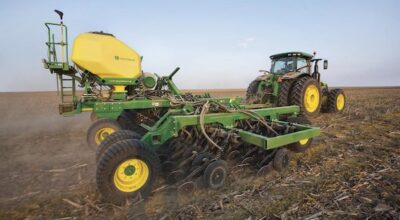John Deere recently made a number of updates to its air seeding equipment. To begin, the company created a new naming strategy, which is designed to help customers identify key product information. Deere has also implemented new features to make its machinery even easier to use. Let’s take a look at some of the changes that are rolling out across air seeding equipment.
https://www.youtube.com/watch?v=i1f6ABbitrg
- The first letter of a piece of equipment will now indicate its machine type. For example, the N500C has an “N” to designate that it is a no-till drill, equipped with ProSeries openers.
- The first number of a piece of equipment indicates the series. For example, the N500C is a part of the “5” Series.
- The differentiator is at the end of an equipment’s name. In the case of the N500C, the differentiator is the “C,” which stands for Central Commodity System.
- The Air Seeder 1895 now has the ProSeries opener. A new seed boot design also gives operators more consistent seed placement.
- The Air Seeder 1895 will operate under a new name beginning with the ‘20 model: the N500F Series No-Till Drill. The “F” stands for fertilizer placement.
- RelativeFlow blockage monitoring will be added across all sizes.
- Fertilizer openers will include a sealing wing to keep more anhydrous in the ground, which will then provide a boost to young plants.
- On 1870s for Model Year ’19, RelativeFlow blockage monitoring has been added across 40- and 56-foot machines.
- A high-flotation package has been added on the 76-foot machine for Model Year ’19; this will come standard on the 76-foot machine beginning with the Model Year ’20.
- The 1870 will eventually be renamed the P500 Series Precision Hoe Drill.
- SectionCommand will be base equipment on the 1910 and C850 air carts beginning with Model Year ’20. In turn, customers will have more control over input costs, and be able to cover more acres in less time with automated control. They will also be able to improve the consistency of crop growth by reducing skips and overlaps out in the field.
If you have any questions about a particular piece of Deere equipment, you can contact your local John Deere dealer.
If you enjoyed this post or want to read others, feel free to connect with us on Facebook, Pinterest, or Twitter!


